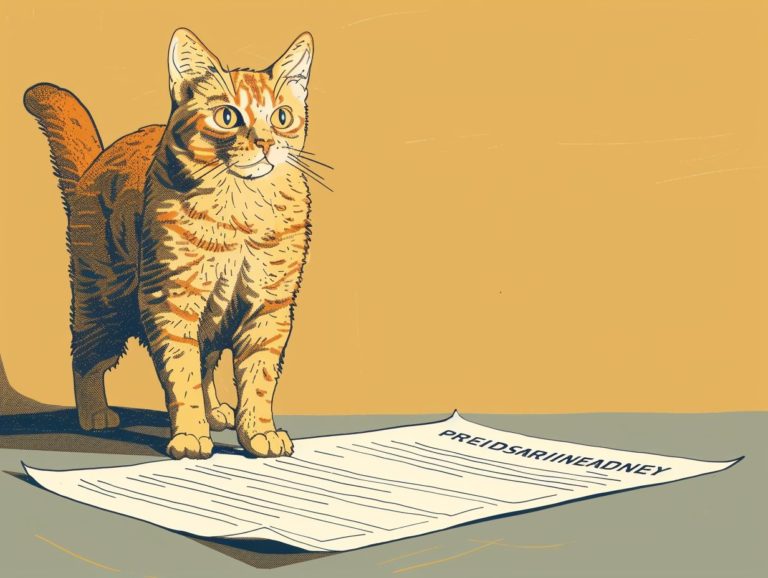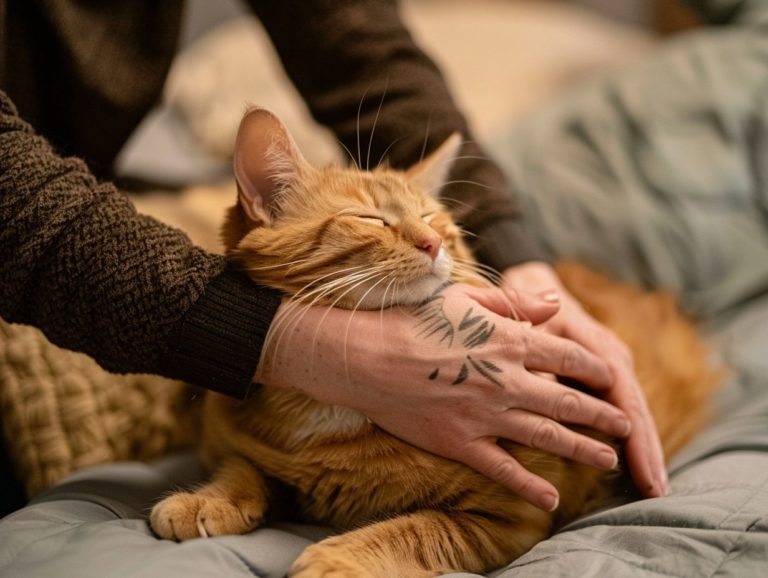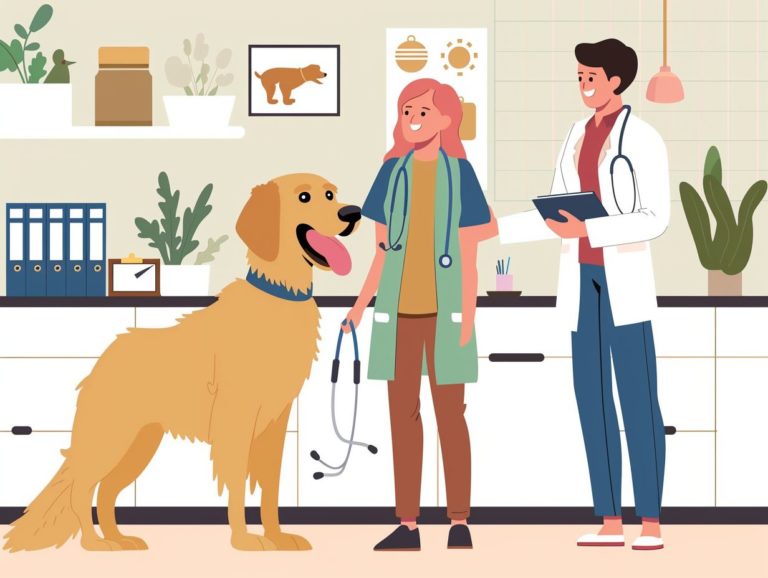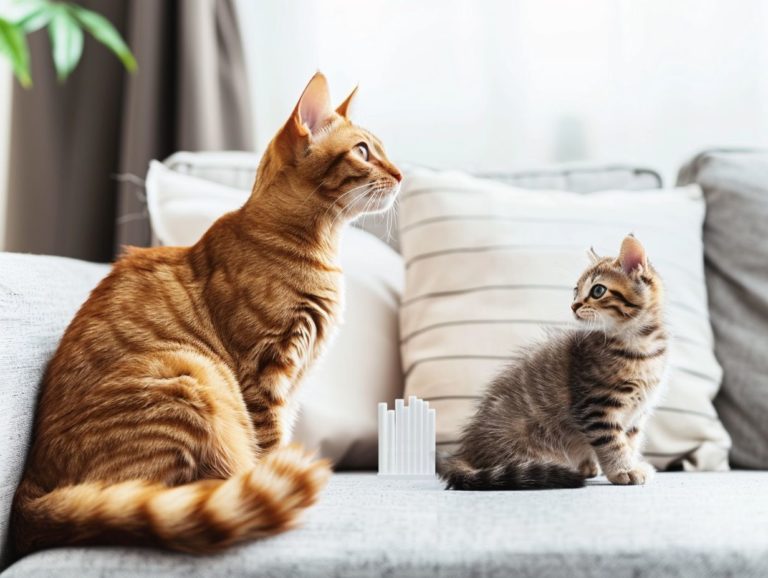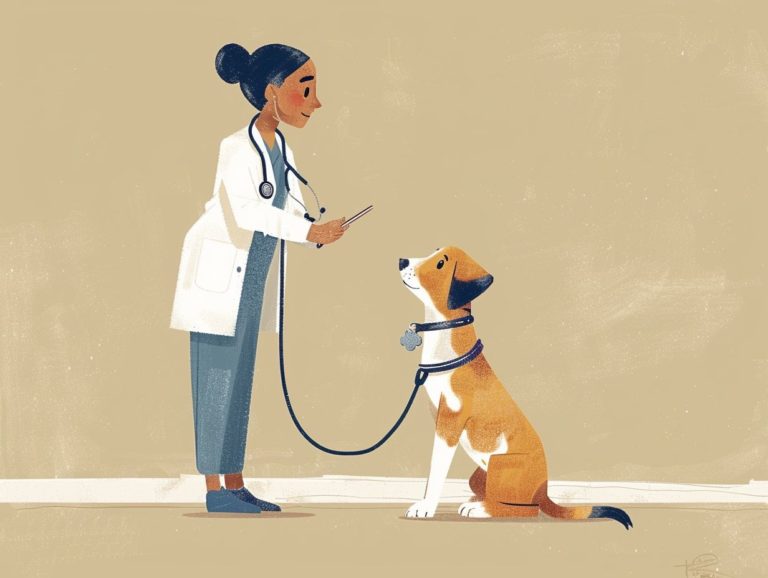The Rise Of Pet Insurance Trends In Feline Health Coverage
Pet owners strive to offer their cats the best healthcare available, treating them as cherished family members. The popularity of pet insurance is on the rise, offering cat owners a means to ensure they can afford essential healthcare for their beloved pets without financial strain.
This article explores the increasing trend of pet insurance, outlines the various coverage options, and discusses the advantages of having pet insurance for maintaining the health of cats.
Key Takeaways:
The Growing Popularity of Pet Insurance
Over the last decade, the pet insurance industry has seen significant growth, fueled by a notable increase in consumer expenditure on pet medical care. Pet insurance policies have become more prevalent among pet owners, with insurers offering a diverse range of comprehensive options to cater to the varying needs of pet owners.
The surge in pet insurance can be attributed to insurance companies integrating pet insurance into their product portfolios to meet the escalating demand from pet owners seeking financial security for their pets. Organizations such as the North American Pet Health Insurance Association (NAPHIA) have played a key role in raising awareness and standardizing practices within the pet insurance sector.
Regulatory bodies like the National Association of Insurance Commissioners (NAIC) have established clear guidelines for transparent policy development and robust consumer protections in the pet insurance market, fostering trust among policyholders.
Insurtech solutions have transformed the pet insurance landscape by simplifying access to and management of policies for pet owners. This technological advancement has enhanced operational efficiency, improved the overall customer experience, and encouraged more pet owners to invest in insurance coverage.
The pet insurance market is projected to continue expanding as the trend of increased consumer spending on veterinary care persists, and pet owners increasingly prioritize safeguarding the health and well-being of their pets.
Factors Contributing to the Trend
The growth of the pet insurance market is driven by several key factors, including the rising cost of veterinary care, increased awareness among pet owners about the benefits of insurance coverage, and the expanding range of comprehensive plans offered by insurance providers to cater to various pet needs.
Insurance companies play a role in promoting pet insurance options through targeted marketing campaigns and partnerships with veterinary clinics. Industry associations like the North American Pet Health Insurance Association (NAPHIA) advocate for the importance of pet insurance and strive to standardize practices within the industry.
Regulatory bodies, such as the National Association of Insurance Commissioners (NAIC), oversee the pet insurance sector to ensure transparency and fair practices, thereby enhancing consumer confidence in pet insurance products.
Types of Pet Insurance
Pet insurance comes in various types, each offering a different set of coverage options and variables to cater to the diverse needs of pet owners and their pets. Understanding the different types of pet insurance is crucial for pet owners to make informed decisions about their pets’ care.
There are plans ranging from accident-only coverage that addresses sudden emergencies to comprehensive policies that cover accidents, illnesses, and preventative care. Some policies come with annual or per-incident limits, while others offer unlimited coverage. Wellness plans are available to cover routine check-ups, vaccinations, and dental cleanings.
Collaborations between insurance companies and veterinarians allow for customization of these options to suit the unique needs of individual pets, ensuring that there is a plan to fit most pet owners’ budgets and desired level of care for their pets.
Coverage Options and Variations
Pet insurance coverage options and variations encompass a wide range of benefits, from basic medical care to comprehensive plans that cover preventive services, emergency treatments, and specialized veterinary care. Understanding the nuances of coverage options is crucial for pet owners looking to provide optimal healthcare for their pets.
Different pet insurance policies offer varying levels of coverage, allowing pet owners to select the options that best suit their budget and preferences. Coverage levels extend from basic coverage for accidents and illnesses to premium plans that include hereditary conditions and behavioral therapy. Deductibles and reimbursement models serve as additional factors that differentiate policies, influencing out-of-pocket costs and claims processing procedures.
Pet owners should carefully review policy exclusions, as they may affect coverage for specific conditions or treatments. Tailored coverage is particularly significant for different pet species, including dogs, cats, birds, and exotic animals, taking into account their unique healthcare needs. Insurance companies play a key role in delivering flexible insurance solutions tailored to meet the diverse requirements of both pet owners and their pets.
Benefits of Pet Insurance for Feline Health
Pet insurance enhances feline health by increasing the accessibility of veterinary care and alleviating the financial burden for pet owners when their cats require unexpected medical procedures. Tailored insurance plans for cats offer specific coverage to address the unique healthcare needs of felines.
With pet insurance, cat owners can ensure their pets receive essential medical attention, preventive care, and necessary treatments without worrying about exorbitant expenses. Insurance providers present a variety of coverage options, including vaccinations, regular check-ups, emergency services, and even treatment for chronic conditions commonly seen in cats.
This proactive approach not only safeguards the well-being of feline patients but also assures owners that quality veterinary care is within reach and affordable.
Improving Access to Care and Reducing Financial Burden
Pet insurance is a vital tool for enhancing pet owners’ access to veterinary care for feline pets, ensuring that pets receive prompt medical attention without significant financial barriers. By reducing the financial burden of pet healthcare, pet insurance allows pet owners to prioritize their cat’s well-being.
This financial safety net is crucial for encouraging preventive care for cats, including regular veterinary check-ups, vaccinations, and early intervention in health issues to maintain feline health. Insurance companies collaborate with veterinary professionals to create plans that include coverage for these preventive services, enabling pet owners to focus on their cats’ long-term health. Learn more about senior cat insurance trends.
Pet insurance plays a critical role during emergencies or unexpected illnesses by covering the high costs of treatment, surgeries, and medications, thus alleviating the dilemma pet owners may face between their pet’s health and financial constraints.
Common Health Issues in Cats and How Pet Insurance Can Help
Common health problems among cats include dental issues, urinary tract infections, and chronic illnesses that require continuous veterinary care. Pet insurance plays a crucial role in providing coverage for the treatment, medication, and veterinary consultations needed to address these and other health concerns and ensure the well-being of cats.
Pet insurance often covers costly procedures for cats, such as dental cleanings, surgery, or specialized treatment for chronic conditions, enabling pet owners to make informed decisions about their cats’ health without financial concerns.
While coverage for these procedures can lead to higher premiums for a pet insurance policy, preventative care like regular check-ups and vaccinations becomes more accessible with insurance, helping prevent the development of more severe illnesses in cats.
Ultimately, pet insurance serves as a safety net, allowing cat owners to prioritize their pets’ health without hesitation.
Coverage for Common Conditions and Treatments
Pet insurance policies cover a wide range of common feline conditions and treatments, including dental care, vaccinations, spaying/neutering, and management of chronic diseases. Understanding the coverage scope for these prevalent health issues is essential for cat owners to evaluate their pet’s insurance needs.
These insurance policies often offer reimbursements for specialized therapies such as acupuncture or physical therapy, which can be particularly beneficial for cats with orthopedic or mobility challenges. While some insurance plans may have limitations on coverage for pre-existing conditions or specific procedures, comprehensive insurance coverage is valuable for addressing a variety of feline health issues.
Pet owners should carefully review the terms of coverage and consider the benefits of preventive care features like routine checkups and dental cleanings to ensure their cats receive optimal care.
Choosing the Right Pet Insurance for Your Cat
When choosing the best cat insurance, it is important to consider your pet’s medical needs and your financial situation. This includes evaluating insurance coverage options, premium quotes, deductibles, and the reputation of cat insurance companies. It is essential to find a policy that aligns with your cat’s medical care requirements and fits within your budget.
Understanding the flexibility of different cat insurance policies is crucial in making the right decision. Factors to assess include the comprehensiveness of coverage for various medical services, the inclusion of routine, emergency, and chronic care, and the long-term cost-effectiveness of the policy. Plus the monthly premium, it is important to consider potential out-of-pocket expenses to determine the overall value of the policy for your pet.
Reputable cat insurance companies are transparent about coverage limits and exclusions, so do not hesitate to ask specific questions to ensure you are getting the appropriate coverage for your cat.
Factors to Consider and Questions to Ask
When considering pet insurance for cats, it is important to evaluate factors such as coverage limits, waiting periods, pre-existing conditions, and reimbursement policies. Asking pertinent questions to insurance providers regarding these factors can help pet owners make informed decisions about which pet insurance plan is best for their cats.
Key considerations include the following factors to evaluate:
- Coverage Limits
- How much will the insurance policy pay up to?
- How frequently are the limits reset?
- What is the policy’s maximum coverage limit?
- What other types of limits are there on coverage?
- Waiting Periods
- How long is the waiting period before coverage begins?
- Does the waiting period vary by condition or treatment?
- Pre-Existing Conditions
- Does the insurance policy cover pre-existing conditions?
- Reimbursement Policy
- What is the reimbursement policy for the insurance policy?
- How is the reimbursement amount calculated?
- Coverage Details Factors to Evaluate
- What treatments, procedures, and medications are covered by the insurance policy?
- What are the coverage limits for the policy?
- Exclusions Factors to Evaluate
- What conditions are not covered by the insurance policy?
- What services are not covered by the insurance policy?
- Claim Procedures Factors to Evaluate
- How do you submit a claim under the policy?
- What is the timeframe for reimbursement after a claim is submitted?
- What documentation is required to support a claim?
- Customer Support Factors to Evaluate
- What type of customer support and educational tools does the insurance company offer?
Frequently Asked Questions
What is pet insurance and why has it become increasingly popular?
Pet insurance is a type of insurance that helps cover the cost of veterinary care for pets. It has become more popular due to the rising cost of pet healthcare and the increasing number of pet owners who see their pets as members of their family.
What is feline health coverage and why is it important for cat owners?
Feline health coverage is a type of pet insurance specifically for cats. It helps cover the cost of medical treatments, surgeries, and medications for illness or injury. It is important for cat owners to have this coverage to ensure their feline companions receive proper medical treatment without financial burden.
What are some common trends in feline health coverage?
Some common trends in feline health coverage include more comprehensive coverage options, increased availability of customizable plans, and a focus on preventive care such as wellness exams and vaccines.
What factors should pet owners consider when choosing a feline health coverage plan?
When choosing a feline health coverage plan, pet owners should consider the cost and coverage of the plan, as well as the reputation and financial stability of the insurance provider. They should also consider their cat’s age, breed, and any pre-existing conditions.
Is pet insurance worth the cost?
That ultimately depends on the individual pet owner’s financial situation and their pet’s potential healthcare needs. For some pet owners, the peace of mind and financial security that pet insurance provides is worth the cost. Others may prefer to set aside a savings fund for their pet’s healthcare expenses.
Can pet insurance be used for pre-existing conditions?
In most cases, pet insurance does not cover pre-existing conditions. However, some insurance providers may offer coverage for certain pre-existing conditions after a waiting period or with an additional fee. It’s important for pet owners to thoroughly read and understand their policy before purchasing.

